RECOVERY OF THREATENED SPECIES
Recovery of threatened species in protected areas of the Galapagos National Park
A fascinating feature of the Galapagos Islands is that its plant biodiversity remains almost intact. Only three endemic species have been reported as extinct. However, there is a high risk that this number will increase due to land use change, climate change and introduced species. According to the Red Book of Endemic Plants of Ecuador, more than half of the endemic plant species are classified as threatened: 12% critically endangered (CR), 15% endangered (EN) and 32% Vulnerable (VU).
The extinction of a species is final, it cannot be reversed, and there are no two species that fulfill exactly the same ecological role. Recognizing this, the Galapagos Verde 2050 Program has initiated recovery efforts with four species that require immediate action, three of which belong to endemic genera: Lecocarpus lecocarpoides, Galvezia leucantha subsp. leucantha, Scalesia retroflexa, and Scalesia affinis. In the future, we hope to expand the project to additional species, thus avoiding a decline in Galapagos biodiversity.
The main objective of this project is to contribute to the conservation of the terrestrial ecosystems of Galapagos and preserve its biodiversity through the protection and recovery of threatened plant species populations.

Lecocarpus lecocarpoides var. lecocarpoides Galvezia leucantha subsp. leucantha
Scalesia affinis Scalesia retroflexa
TIMELINE
The GV2050 was born in 2013 as a single project with two components: ecological restoration and sustainable agriculture, remaining with this organization until 2021, when it takes the category of Program made up of 7 different projects. The GV2050 started with this project in 2014, starting when the phases scheduled for completion in 2050 were developed.
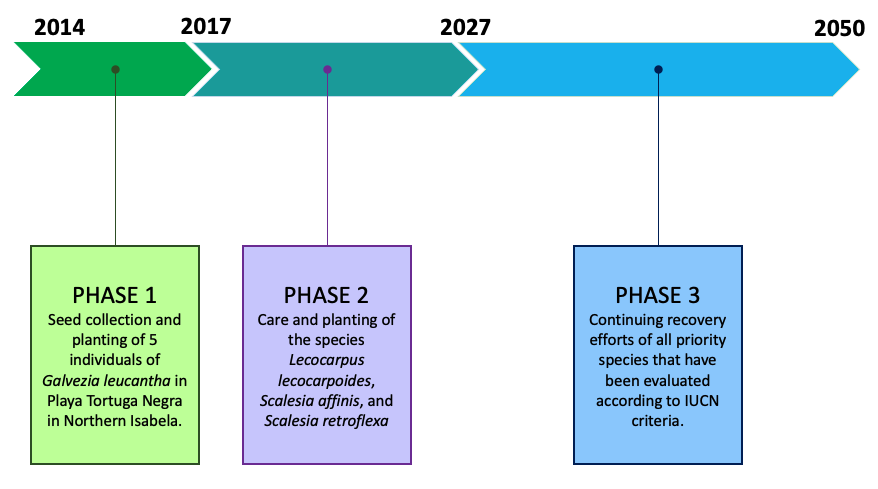
Phases and study sites of the project of the Threatened Species project.
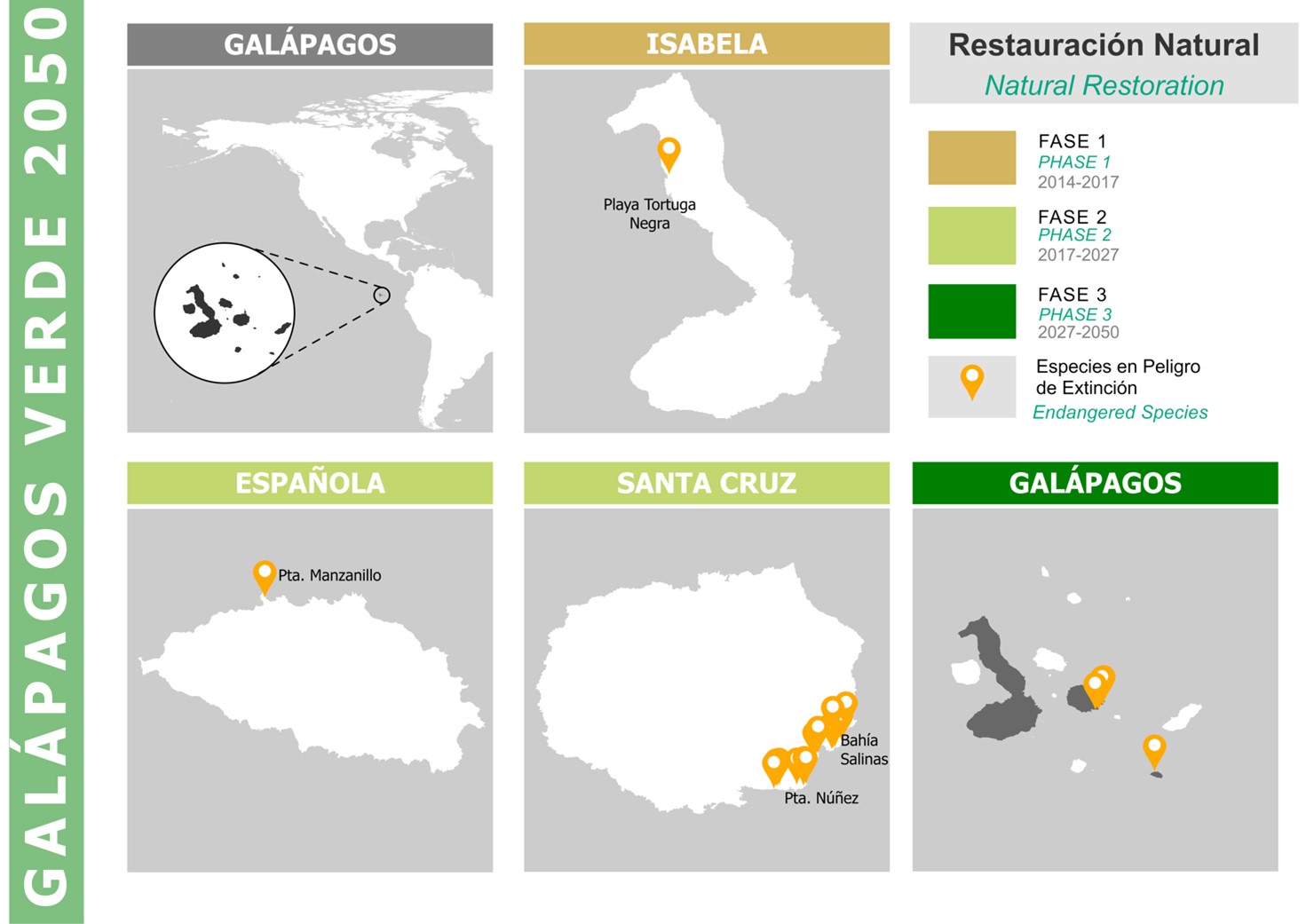
Map of phases of the Threatened Species Recovery project. Prepared by: Cárdenas D. 2022.
GET TO KNOW THE SPECIES
Galvezia leucantha subsp. leucantha (North Isabela)
G. leucantha is on the red list of species in Ecuador due to a restricted geographic distribution and threats from invasive herbivores (Elisens, 1989; Guzmán et al., 2017; Jaramillo & Tye, 2018; León-Yánez et al. , 2011; Wiggins, 1968). Three subspecies are recognized, of which subsp. leucantha is historically distributed in Fernandina and Isabela (Guzmán et al., 2017). Unfortunately, after several searches in Fernandina, Darwin volcano, and Wolf volcano, the only site where it is currently found is Playa Tortuga Negra in North Isabela (Tapia, 2019a, 2019b, 2020). In 2015, the population of G. leucantha subsp. leucantha at this site had only four individuals (Jaramillo & Tye, 2018). Due to the small size of the population, it is necessary to continue with the recovery of this species.
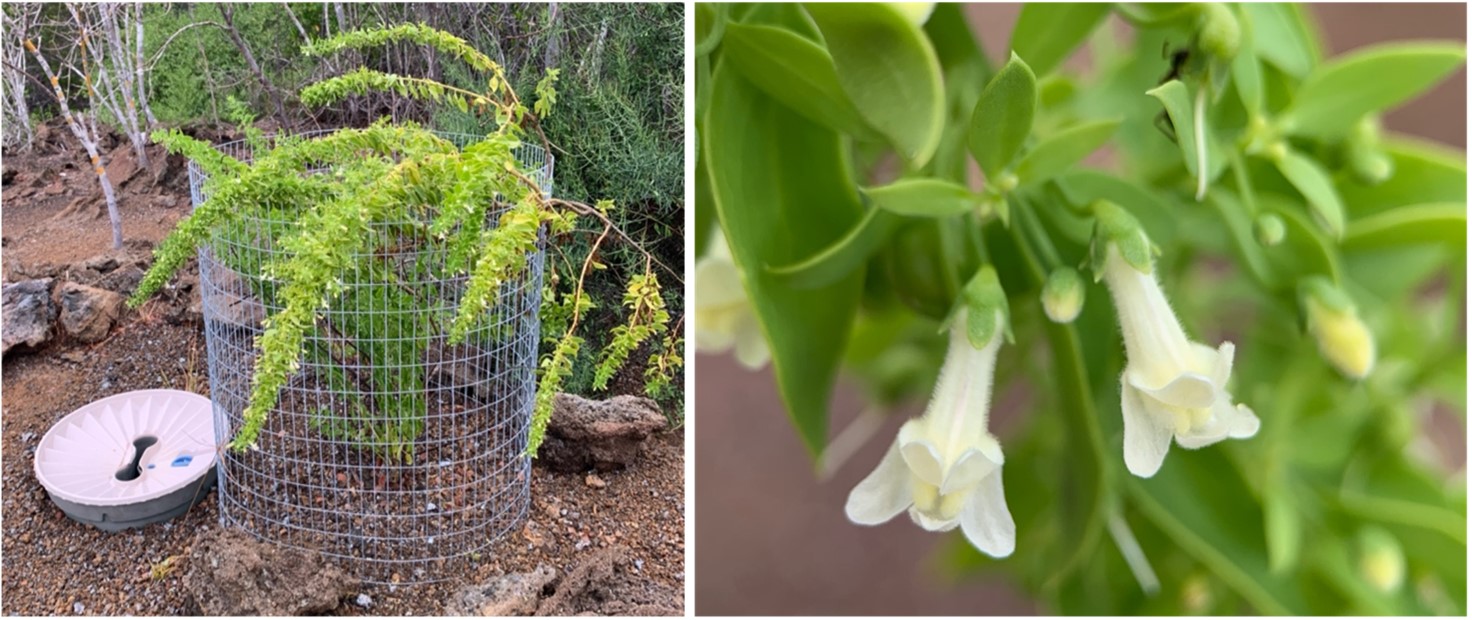
Adult individual of Galvezia leucantha subsp. leucantha.
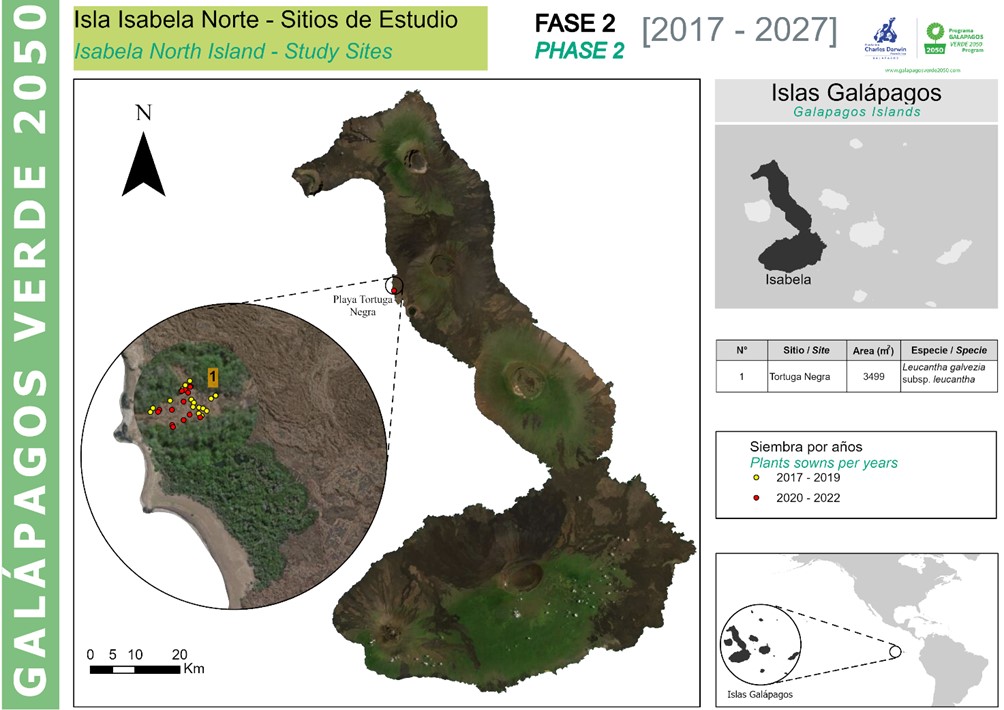
Mapa del sitio de estudio y proyección cartográfica de los puntos de G. leucantha en Isabela Norte. Elaborado por: Cárdenas D. 2022
Lecocarpus lecocarpoides (Española)
Lecocarpus is one of the 6 endemic genera of the Galapagos Islands. It includes 4 species distributed in 3 islands: Lecocarpus lecocarpoides (Española), L. pinnatifidus in Floreana and L. leptolobus and L. darwinii in San Cristóbal (Brok & Adsersen, 2007). On Española Island, despite the fact that introduced goats were eradicated in 1978, populations of several endemic plant species did not recover (Atkinson, 2007). Lecocarpus lecocarpoides is one of these species, which is why it has been included in the red list of endemic plants of Ecuador in the Endangered (EN) category (León-Yánez et al., 2011). It occurs on the main island of Española and four of its surrounding islets in Gardner Bay (Brok & Adsersen, 2007). The population at Punta Manzanillo, the only known population on the main island, was thought to be nearly extinct until recently (Atkinson et al., 2008). Fortunately, in 2020 48 small plants were found in Punta Manzanillo (Jaramillo, 2021). With so few individuals in the wild, it is important to implement effective restoration strategies that increase the population of L. lecocarpoides in Punta Manzanillo and prevent its extinction.
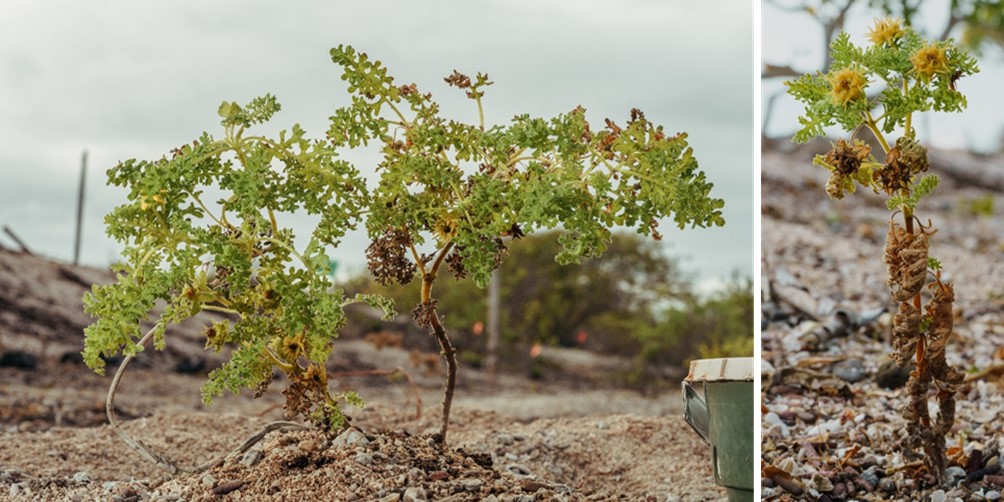
Individuals of Lecocarpus lecocarpoides in Española.
Scalesia retroflexa (Santa Cruz)
Scalesia retroflexa is one of the 15 species of the endemic genus Scalesia, it is found only Santa Cruz Island, and has a very reduced distribution (Aldáz 2004). Scalesia retroflexa is included in the red list of endemic species of Ecuador as Critically Endangered (León-Yánez et al., 2011). Aldáz (2004) studied the population of S. retroflexa from 1998 to 2003, producing valuable information on the population structure of this species. However, it is necessary to assess the current population status of this critically endangered species.
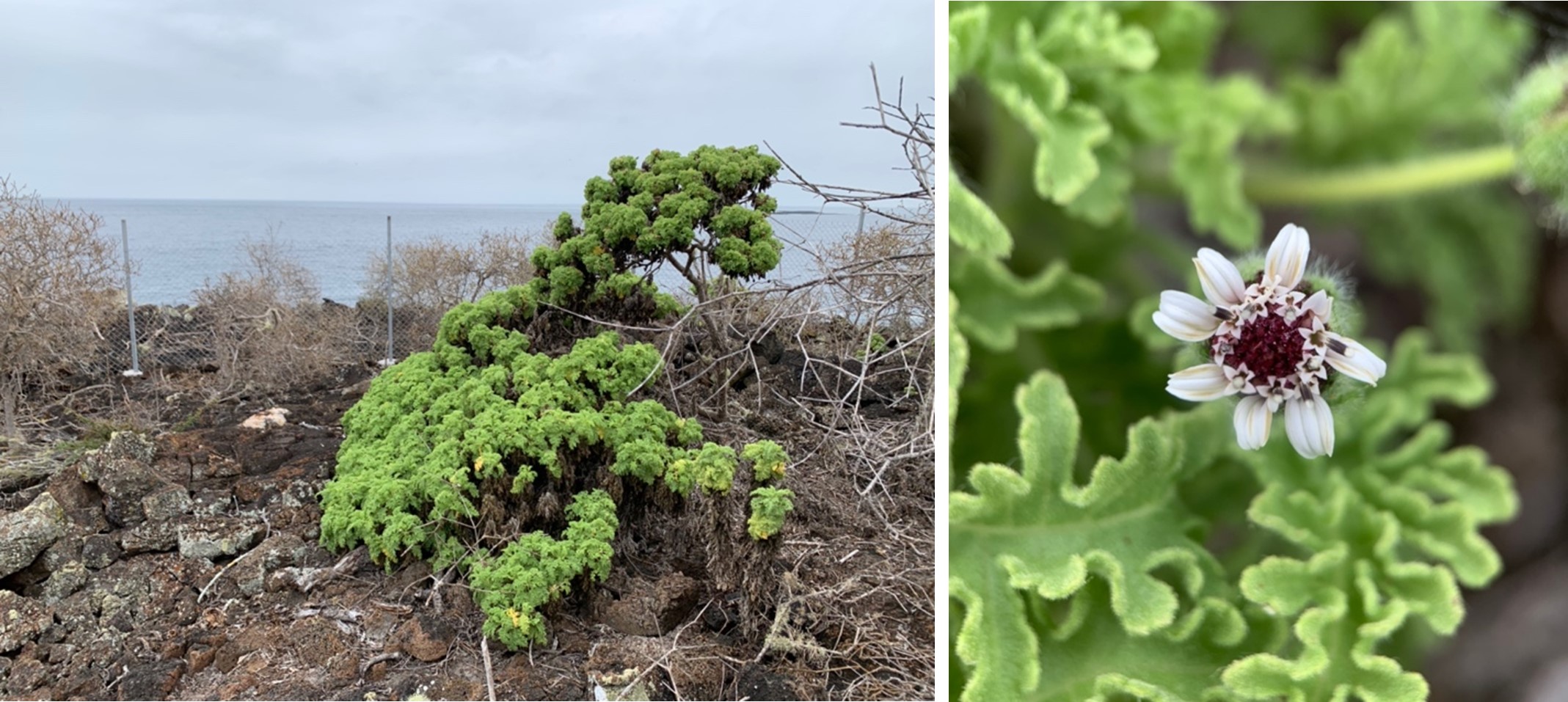
Adult individual of Scalesia retroflexa.
Scalesia affinis (Santa Cruz)
Scalesia affinis is part of the 15 species of the endemic genus Scalesia, present on four islands: Fernandina, Floreana, Isabela, and Santa Cruz. It is included in the red list of endemic species of Ecuador as Vulnerable (León-Yánez et al., 2011). However, the population of Santa Cruz has been considered Critically Endangered since 2005, when only 71 individuals were registered (Jaramillo, 2005).
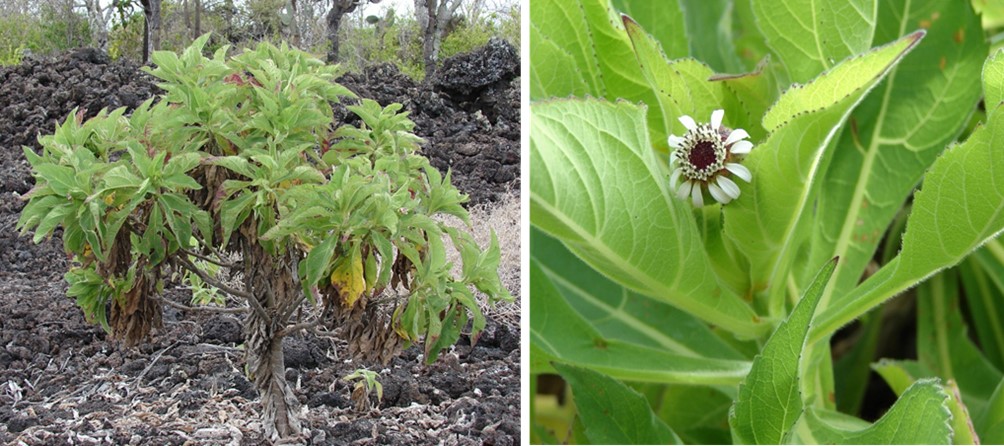
Adult individual of Scalesia affinis
Can you imagine how many plants we have planted in this project?
Galvezia leucantha subsp. leucantha (North Isabela)
The population of Galvezia leucantha at Playa Tortuga Negra has increased from just four individuals in 2017 to 24 individuals in 2022. After much effort in germination and seedling care at the Charles Darwin Research Station (CDRS), it has been possible to repatriate 19 plants to their home island. All these plants were planted with tools for ecological restoration and metal fences to provide them with water and protect them from animal herbivory.
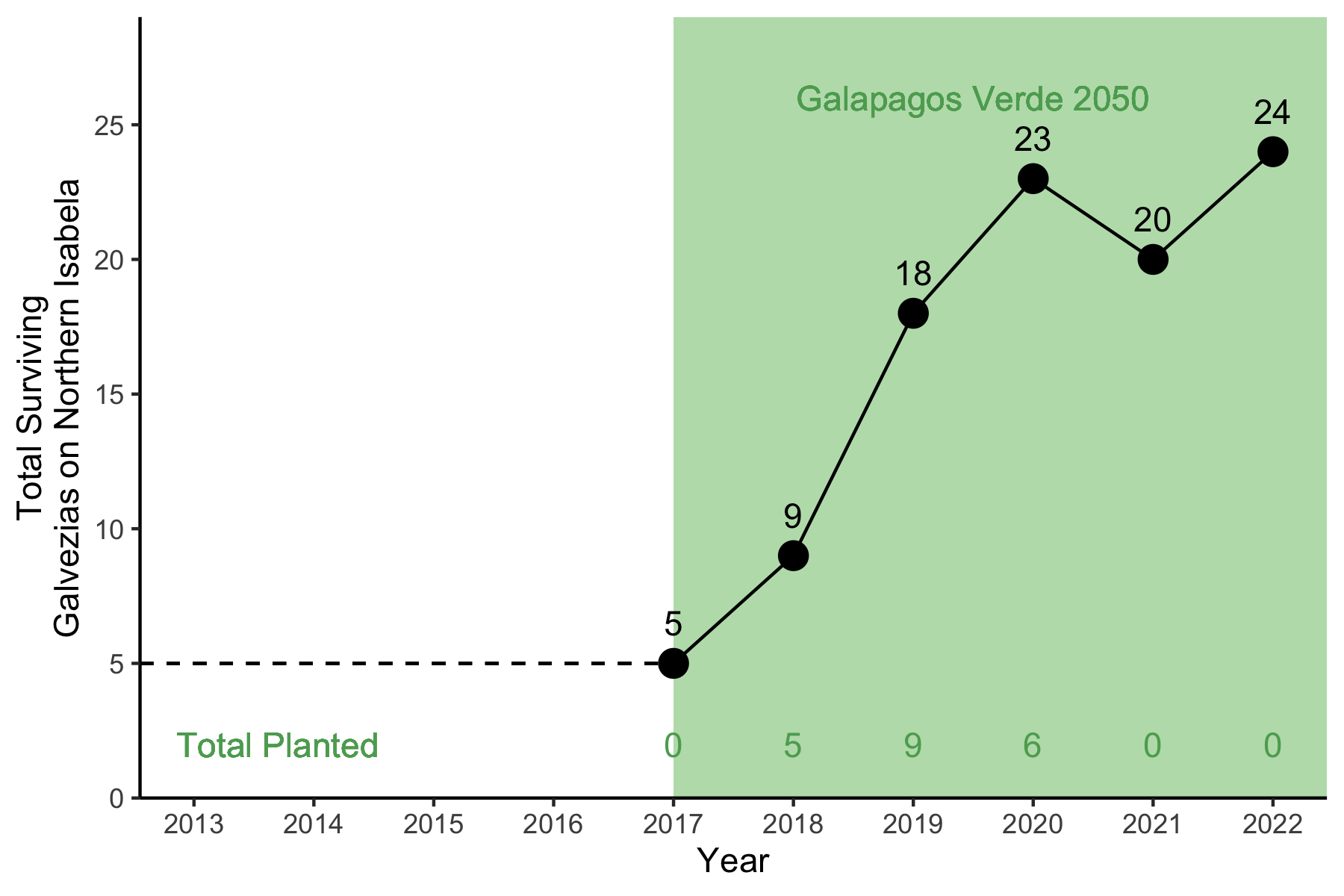
Graph showing the population growth of Galvezia leucantha at Playa Tortuga Negra after GV2050 initiated recovery efforts with this species.
Lecocarpus lecocarpoides (Española)
After this species was rediscovered on Española in 2020, the Gv2050 initiated efforts to increase its population, With the few seeds that were available, it was possible to germinate 30 individuals using scarification techniques in the CDRS. The care of these individuals continued, and they have produced over 6,000 seeds that will be used to recover this species.
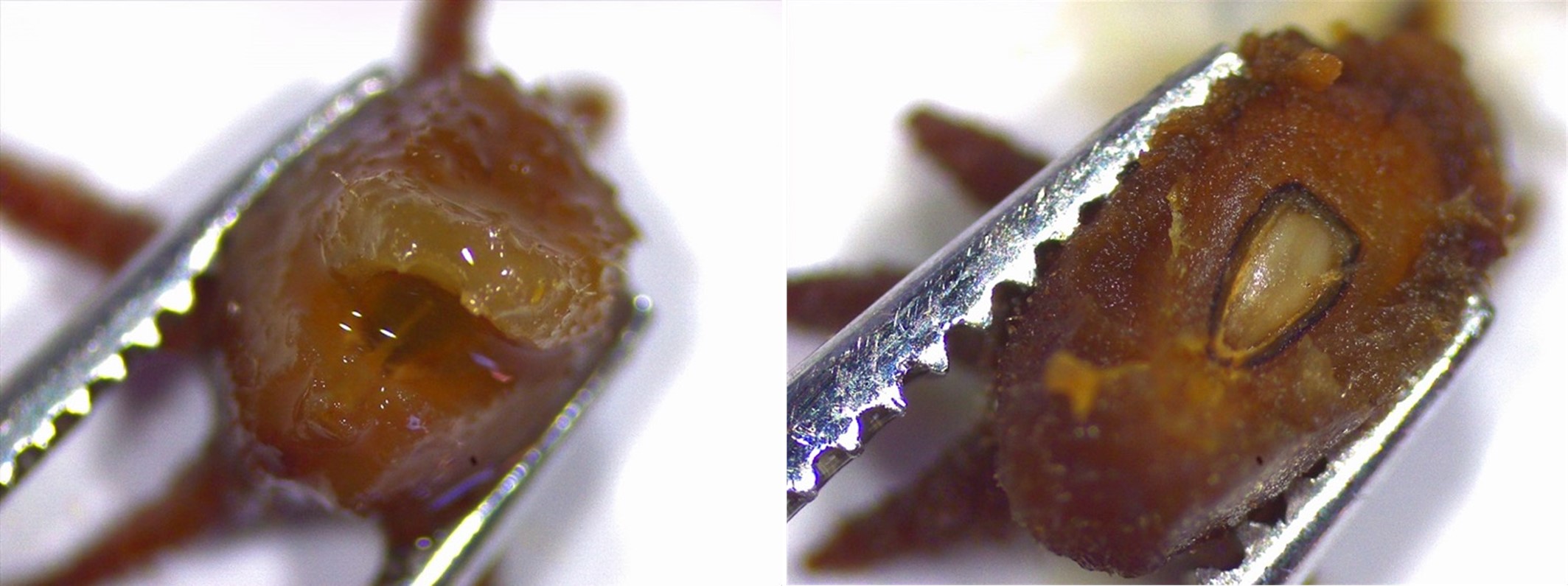
Scarification process of Lecocarpus lecocarpoides seeds to expose the embryo, promoting its germination
Scalesia affinis (Santa Cruz)
We have planted 437 individuals of Scalesia affinis on Santa Cruz since 2014. The survivors of these plants make up 45% of the total S. affinis population on this island. Sites where this species has been planted include two areas where there are remnant populations (Mirador and Garrapatero) and ecological gardens within the urban area of Puerto Ayora.
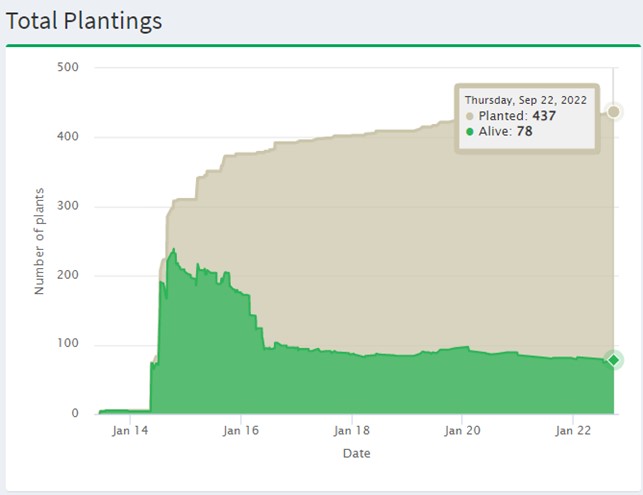
Representative graph of all Scalesia affinis planted in Santa Cruz. In gray all the planted plants, in green the surviving individuals. Source: RestoR GV2050. Capture date: October 28, 2022.
Scalesia retroflexa (Santa Cruz)
We have reviewed more than 50 studies looking for information on potential locations of this critically endangered species. So far, we have confirmed the presence of a population of 23 individuals, and we have protected it with metal fencing from its main threat, introduced goats.
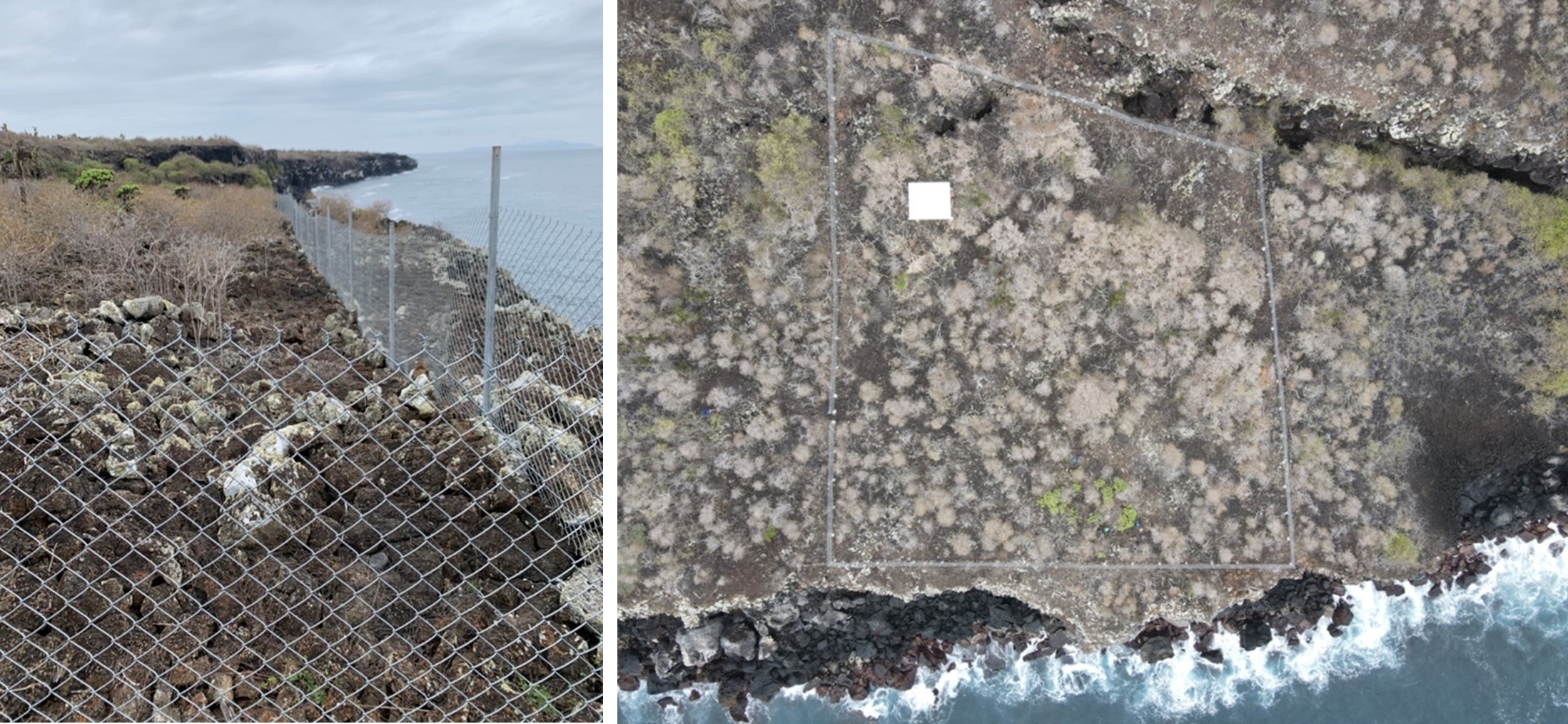
Protective fencing installed around the population of Scalesia retroflexa
SOME OF OUR EXPEDITIONS….
Did you know that the GV2050 is conducting germination experiments with L. lecocarpoides?
In 2022, we started germination experiments at Punta Manzanillo with the goal of increasing the germination rate and population size of Lecocarpus lecocarpoides in Española. For this experiment, a total of 1200 seeds collected from individuals of L. lecocarpoides germinated in the CDRS laboratory were used. Treatments being tested include a scarification treatment to break seed dormancy and soaking the seeds for several days before sowing.
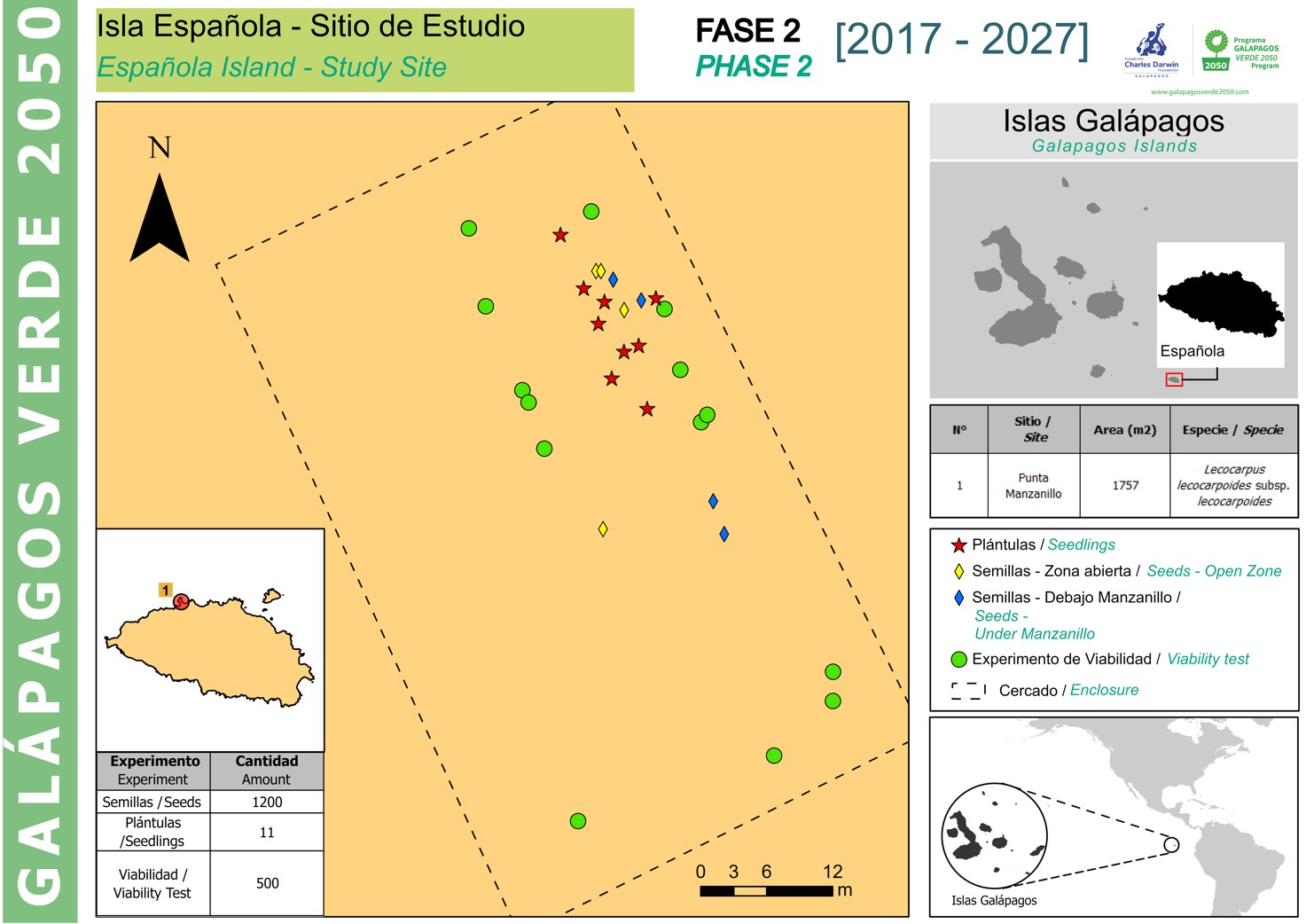
Map of the study site and cartographic projection of the planting points taken in the field. Prepared by: Cárdenas D. 2022
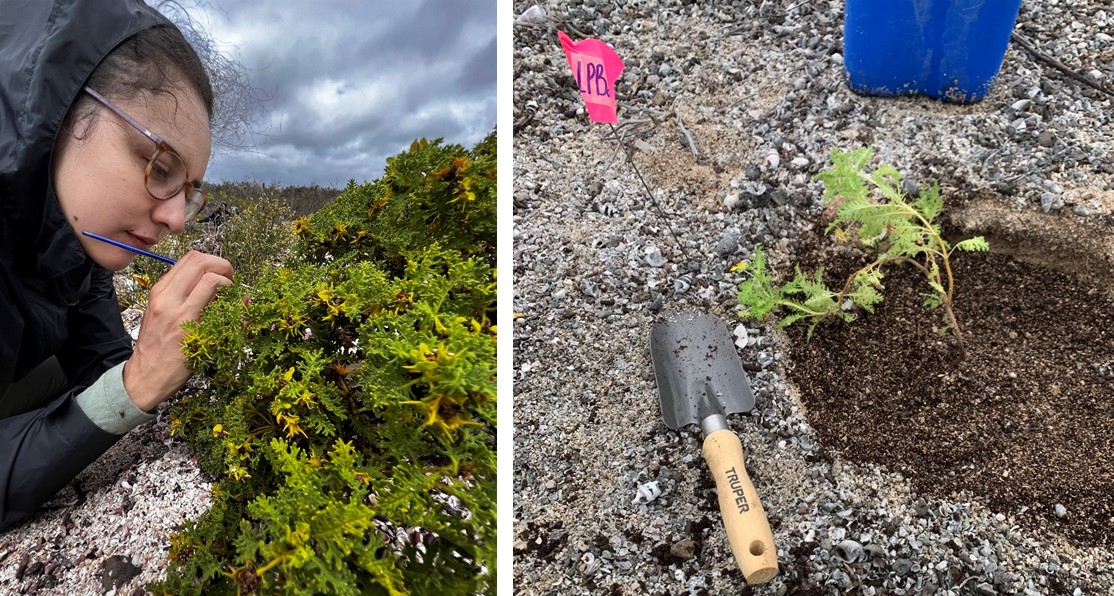
Monitoring of Lecocarpus lecocarpoides grown in Punta Manzanillo (left) and planting of germinated seedlings in the CDRS laboratory (right).
Three months after the expedition, the monitoring of the sown seeds will be carried out in Punta Manzanillo, to determine the germination rate.
Did you know that there is only one known population of Scalesia retroflexa on the entire island of Santa Cruz?
Scalesia retroflexa is an endemic species of Santa Cruz Island with such a restricted range of distribution that only a small population is known located in an area of cliffs west of Punta Núñez. This population is periodically monitored by the GV2050 team for seed collection, counting of individuals and measurement of the occupied area, among other data. Efforts are focused on maintaining the existing population and trying to germinate these seeds, to later sow them in this same area.
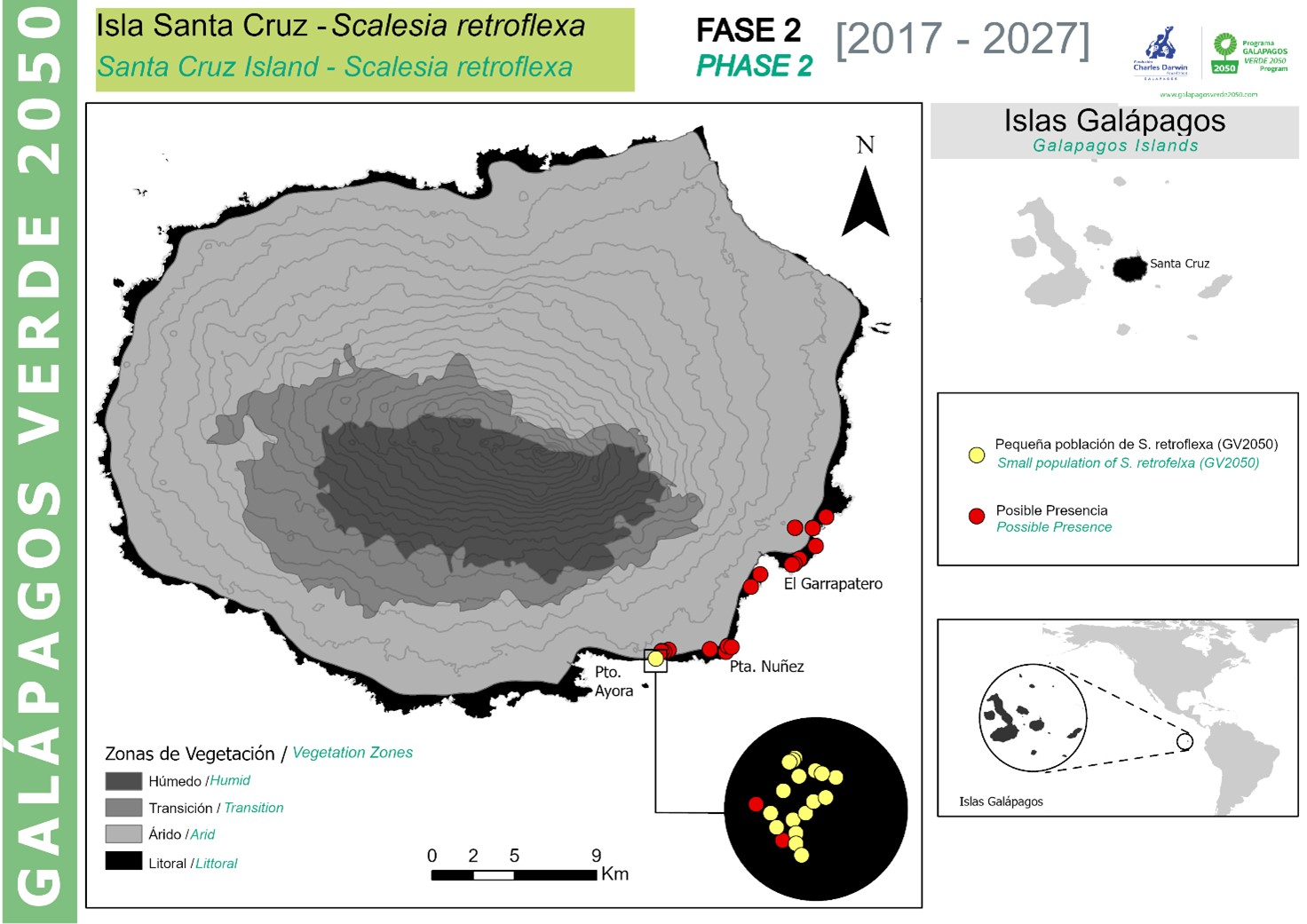
Map of the study site and cartographic projection of Scalesia retroflexa in Santa Cruz. Prepared by: Cárdenas D. 2022.
The possibility that there are more undiscovered populations along the southeast coast of the island is contemplated, so a field trip is scheduled to cover this entire coast with the main objective of identifying other possible populations of S. retroflexa.
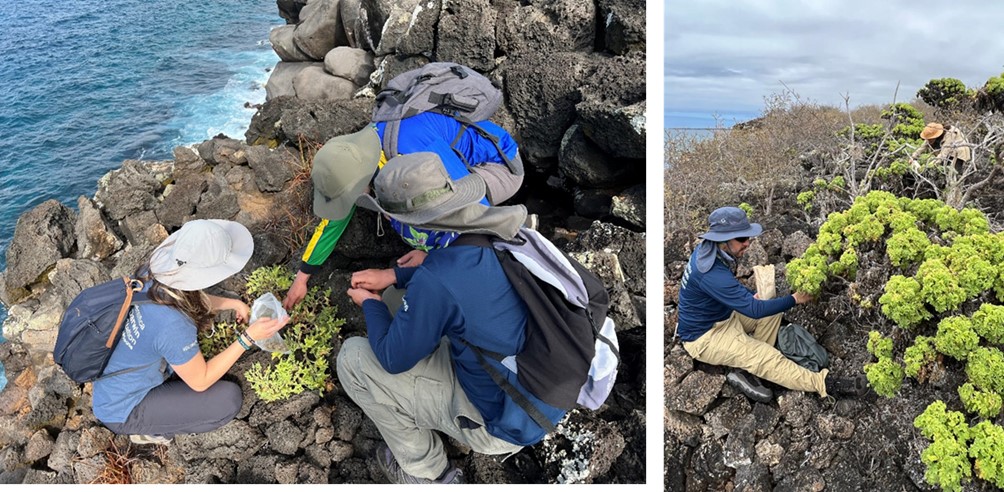
Monitoring of the population of S. retroflexa in Puerto Núñez. On the left expedition in July 2022 and on the right expedition in October 2022.
Do you want to know a little more about our species recovery project?
- Charles Darwin Foundation – Taking Care of Very Important Baby Plants (darwinfoundation.org)
- Recovery of threatened species and their ecological restoration (darwinfoundation.org)
- Charles Darwin Foundation - Saving a species from the brink of extinction: Galapagos Verde 2050 (darwinfoundation.org)
- Charles Darwin Foundation - Lecocarpus species re-discovered on Española Island after decades of not being registered! (darwinfoundation.org)
- Charles Darwin Foundation - The journey for taking care of an endangered shrub in the Galapagos (darwinfoundation.org)
- (PDF) Galvezia leucantha Wiggins (researchgate.net)
- La Galvezia se creía extinta, pero renació | Columnistas | La Revista | El Universo
- Scalesia retroflexa (darwinfoundation.org)
You can also find our news on social networks
- Facebook post about Scalesia germination work
- Facebook post about Lecocarpus being rediscovered in Española
- Facebook post about Expedition to North Isabela
- Facebook post about Galvezia leucantha in North Isabela
- Images about work carried out with Scalesia
- Facebook post about expedition to North Isabela
You can download more information from some of our publications
Download the book "Galápagos Verde 2050 (Volumen 1)"
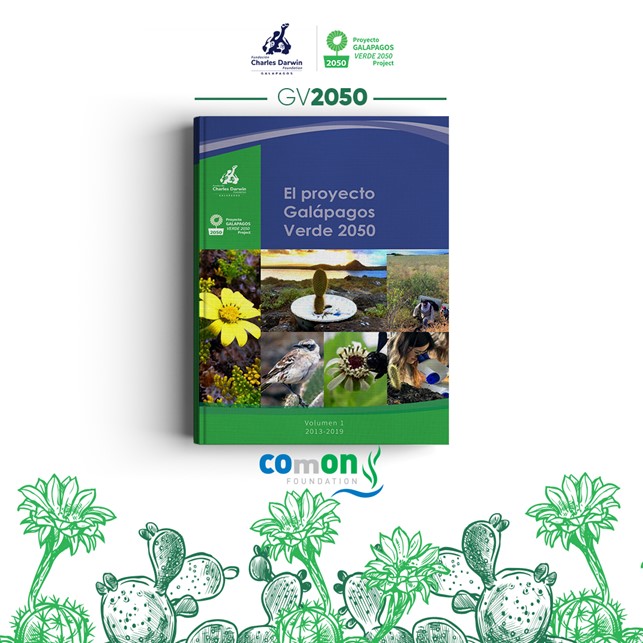
Download the triptych about the work done by the GV2050

Download a scientific article about Galvezia leucantha Wiggins
REFERENCES
Atkinson, R., Rentería, J. L., & Simbana, W. (2008). The consequences of herbivore eradication on Santiago: are we in time to prevent ecosystem degradation again. Galapagos Report, 121–124.
Elisens, W. J. (1989). Genetic variation and evolution of the Galapagos shrub snapdragon. National Geographic Research, 5(1), 98–110. https://agris.fao.org/agris-search/search.do?recordID=US8906573
Guzmán, B., Heleno, R., Nogales, M., Simba~ Na, W., Traveset, A., & Vargas, P. (2017). Evolutionary history of the endangered shrub snapdragon (Galvezia leucantha) of the Galapagos Islands. Diversity and Distributions, 23, 247–260. https://doi.org/10.1111/ddi.12521
Jaramillo, P., & Tye, A. (2018). Galvezia leucantha Wiggins. In Atlas de Galápagos (pp. 64–65).
León-Yánez, S., Valencia, R., Pitman, N., Endara, L., Ulloa, C. U., Navarrete, H., León-yánez, S., Valencia, R., Navarrete, H., & Pitman, N. (2011). Libro Rojo de las Plantas Endémicas del Ecuador. Pontifica Universidad Católica Del Ecuador: Publicaciones Del Herabrio QCA, 2. http://www.academia.edu/646220/Libro_rojo_de_las_plantas_endémicas_del_Ecuador_2000_Red_book_of_Ecuadors_endemic_plants_2000_
Wiggins, I. L. (1968). A new species and subspecies of Galvezia (Scrophulariaceae) from the Galapagos Islands. The Academy, 65, 1–7.
Inter-institutional collaborations
Galapagos National Park Directorate (GNPD), Galapagos Conservancy, Agency for the regulation and control of biosecurity and quarantine for Galapagos (ABG)
Our main donor
COmON Foundation 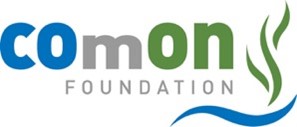
 Donors:
Donors:

Partners:




